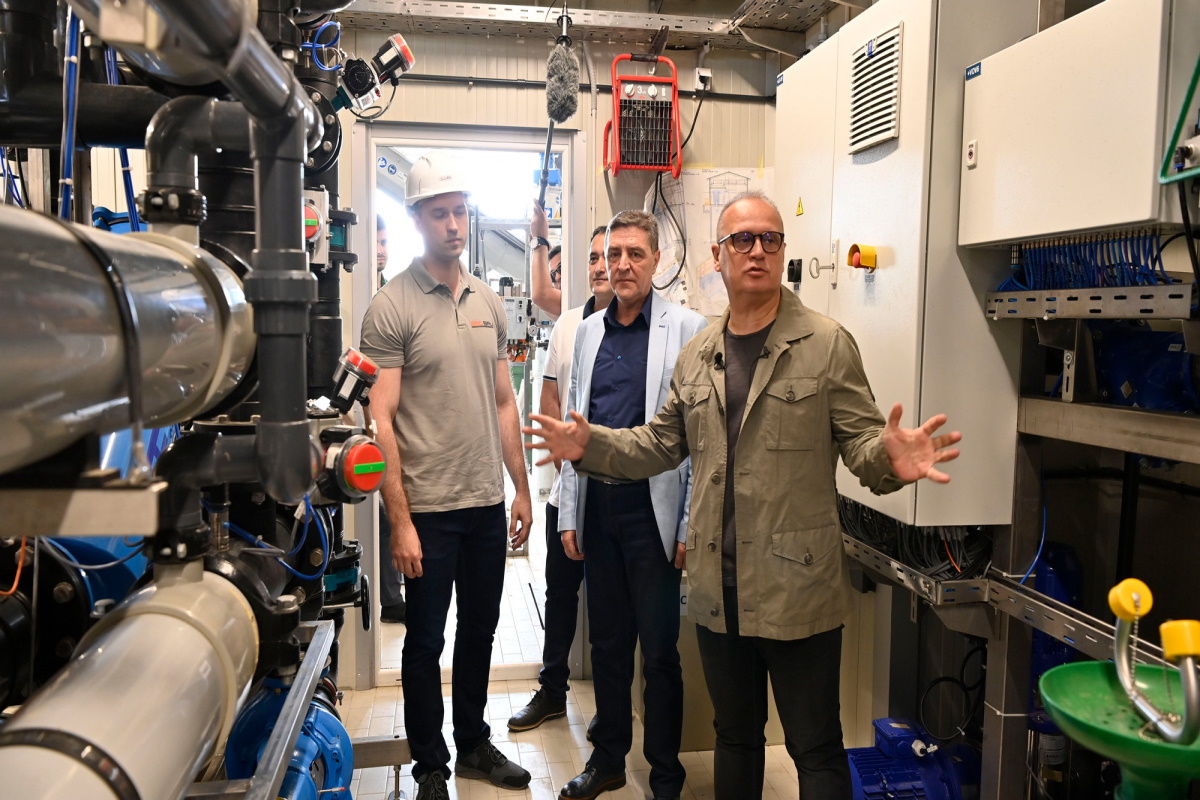His Excellency Emanuele Giaufret, Ambassador and Chief of EU Delegation in the Republic of Serbia has especially emphasized in his blog post on the web page of the Ministry of European Integration ecology as a field of investment of the EU in Serbia. Giaufret states that there are funds but that the interest of Serbia for “Green Transformation” investment is also evident. Investments primarily pertain to wastewater treatment plants and solid waste management.
“Serbia has started the 2022 optimistically in terms of environmental protection after Cluster 4 was opened in December 2021 which includes transport, energy, Trans-European networks and the environment and climate change. In practice, the opening of negotiations for the Cluster of Chapters means that in these fields, substantial negotiations may commence. That also means that it is necessary for Serbia to continue investing significant effort in order to fulfill necessary terms for the closing of said Chapters” Giaufret writes in his blog post titled “The EU is a partner of Serbia on the Green Transformation Path”.
In one part of a blog post titled “Focusing on Serbia”, the Ambassador of the EU states that Serbia has expressed founded concern at the COP26 Conference regarding the financing of the Green Transition, providing energy security and support to the workers within the transition to green jobs and green industry.
“Goods news is that there are financial means. However, in order for ‘Green Financing’ to make sense, it is necessary to increase ambitions in the climate area. Climate ambitions of every country are reflected in the nationally determined contributions (NDC) which represent plans with goals of reducing emissions and adaptation usually up to 2030, and contain information on its fulfillment. Adoption of revised nationally determined contributions which Serbia has announced before the COP26 Conference is the best way to ensure access, not only to global funds in environmental and climate area and bilateral grants, but also to cheap Green loans and other credit funds. Substantial economic growth of Serbia and large investments in infrastructure are evident”, Giaufret says.
He also sates that Serbia currently spends three times more energy per unit of GDP than the EU average.
“Concurrently, we would have to work together adapting to already altered climate. We know from multiple studies that Serbia and Southeast Europe are in a region which is warming faster than the global average. That means that it will be greatly impacted by climate change and that children which are born today will probably experience the dramatic consequences of intensive floods, forest fires, droughts and huge blows to the economy. Farmers will lose their income and infrastructure like roads and railroads will suffer great consequences. Nevertheless, the price of absence of any reaction is far greater than the price of acting. Considering its sensitivity to negative consequences of climate change, Serbia could suffer losses amounting to 13 million Dollars by the end of this decade” Giaufret claims and states that Serbia needs more resistant crops, water storage systems (such as dams and reservoirs) as well as drainage systems. Furthermore, construction of wastewater treatment plants would reduce organic pollution of watercourses and lakes and would insure their sustainability due to increased temperatures and expected water shortages.
In order to initiate the Green Transformation, the European Union has prepared the Green Agenda for the Western Balkans which is a part of the economic and investment plan of the European Union for the Balkans.
“The EU for the Green Agenda in Serbia, in cooperation with the Ministry of Environmental Protection, UNDP, the Swedish Agency Sida and the European Investment Bank (EIB) will help Serbia to improve policies, take concrete measures and increase Green Transformation investments. It is a program worth 8 million EUR for the reduction of air pollution, combating biodiversity loss, support for firms to become more circular etc. Many people in Serbia are becoming increasingly more worried for the environment. Recent demonstrations organized in the country against, for example, air pollution show that these questions are gaining more importance” the Ambassador claims.
Giaufret has dedicated a particular segment of his blog to specific investments so far the EU has made to Serbia in the area of ecology. Wastewater treatment plants are in the first place:
“The European Union supports the acquisition process of Serbia in terms of environmental and climate agency in three main directions:
- Investments: So far, the EU has invested more than 400 million EUR in environmental protection. Serbia has added 200 million EUR to that which makes for 600 million EUR in total for water supplying, wastewater treatment plants, biodiversity protection and solid waste. EU has invested an additional 90 million EUR for flood recovery, flood protection and reduction of unfavorable weather risks. The EU financing is significant and it is a key quality of the EU expertise. We also need:
- Political dialogue with the Government, Municipalities, and the civil society;
- Investing in people and institutions in order to increase the capacities on the national and local level, build and conform the legislation with the European acquis”, Giaufret has singled out.








